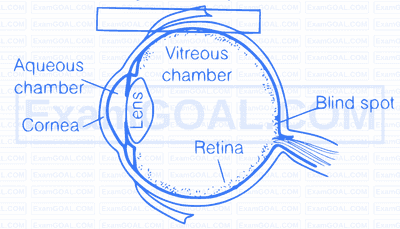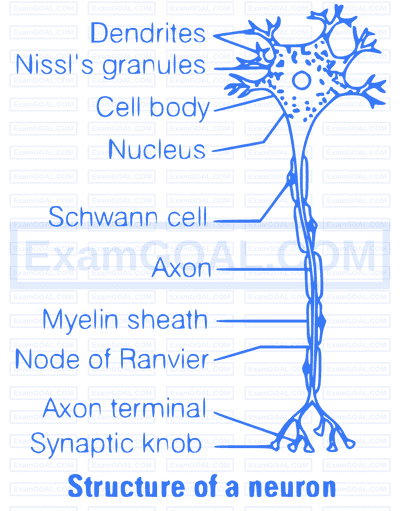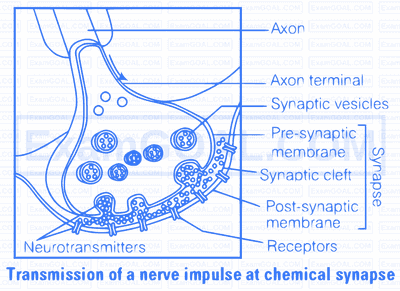Label the following parts in the given diagram using arrow.
(a) Aqueous chamber (b) Cornea (c) Lens (d) Retina (e) Vitreous chamber (f) Blind spot

Representation of the following parts of eye

A neuron has three main parts
(i) Cell body (ii) Axon (iii) Dendrites
Any stimulus/nerve impulse passes from one neuron to another via axon. This nerve impulse is wave of bioelectric/electrochemical disturbance that passes along neuron during conduction of an excitation.

Transport and release of a neurotransmitter occurs within a synapse. At a chemical synapse, the membranes of the pre- and post-synaptic neurons are separated by a fluid-filled space called synaptic cleft. Chemicals called neurotransmitters are involved in the transmission of impulses at these synapses. The axon terminals contain vesicles filled with these neurotransmitters. When an impulse (action potential) arrives at the axon terminal, it stimulates the movement of the synaptic vesicles towards the membrane, where they fuse with the plasma membrane and release their neurotransmitters in the synaptic cleft. The released neurotransmitters bind to their specific receptors, present on the post-synaptic membrane. This binding opens ion channels allowing the entry of ions which can generate a new action potential in the post-synaptic neuron.
